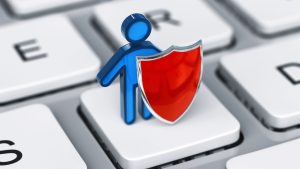
Navigating the digital landscape can often feel like walking through a minefield, especially when it comes to protecting your most sensitive data. From bank account details to private medical records, our lives are now condensed into bits and bytes that can be shockingly easy prey for cybercriminals. But fear not! This post isn’t about doom and gloom — rather, it’s here to empower you. We’ve compiled a list of eight practical strategies that are not only easy to implement but are also effective in shielding your personal information from prying eyes. Ready to fortify your digital fortress? Let’s dive in!
#1. Understanding the Importance of Protecting Personal Information
The initial move towards safeguarding your personal information involves comprehending its significance. In our increasingly interconnected world, personal data has become akin to currency and power. Every piece of data – from your financial details to your social media profiles – can lead to malicious exploitation if mishandled or misplaced. Identity theft, fraud, and blackmail – these are merely a few of the potential fallouts from insufficient data security. Recognizing the inherent value of your personal information propels you to take the requisite steps for its protection.
#2. Using Strong and Unique Passwords
A password is your first line of defense against cybercriminals. Therefore, it’s crucial to make it as robust as possible. Avoid using predictable passwords like “123456”, “password,” or your birth date. Instead, opt for a combination of letters, numbers, and special characters. Also, ensure that each of your online accounts has a unique password. This way, if one account gets compromised, the others remain secure.
#3. Utilizing Two-Factor Authentication
Two-factor authentication (2FA) is a powerful tool that adds an additional layer of security to your online accounts. It works by requiring two forms of identification before access is granted. The first is something you know, like your password. The second is something you have, such as a text message with a unique code sent to your phone or an authentication app. This means even if someone manages to crack your password; they would still need the second factor to gain access to your account. Many online services, from email providers to social media platforms, now offer 2FA. Make sure to enable it wherever possible. Remember, the few extra seconds it takes to input a second form of verification can save you from a potential data breach.
#4. Identifying and Avoiding Phishing Scams
Phishing scams are deceptive tactics cybercriminals use to trick you into divulging sensitive information, such as passwords or credit card numbers. These scams often take the form of emails or websites that mimic legitimate organizations. The key to avoiding phishing scams is vigilance. Always double-check the source of an email or the URL of a website before entering any personal information. Be cautious of unsolicited communications that request sensitive data or direct you to suspicious websites. Remember, reputable organizations will never ask for confidential information through email or text messages. By staying alert and informed, you can effectively identify and avoid falling victim to phishing scams.
#5. Regular Software Updates
Updating your software may seem like a chore, but it’s a critical part of protecting your personal information. Software updates often include patches for security vulnerabilities that hackers could exploit. By keeping your software up-to-date, you’re ensuring that you have the latest protections in place.
#6. Leverage Shredding Services for Physical Documents & Outdated Hard Drives
While much of our information is stored digitally, it’s crucial not to overlook the physical documents and outdated hard drives that may contain sensitive data. Old bank statements, medical records, or hard drives from previous computers can be a goldmine for identity thieves if improperly discarded. Shredding services offer a secure way to dispose of these materials. These services use industrial-grade shredders to physically destroy documents and hard drives, making the data they contain irretrievable. By leveraging shredding services, you’re taking a proactive step to prevent your personal information from falling into the wrong hands.
#7. Take Advantage of Security Software
Security software like antivirus and firewall programs can provide additional protection for your personal information. These tools can detect and block threats before they can cause damage. Make sure to keep your security software updated for the best results.
#8. Implement Safe Internet Practices
Safe internet practices involve being mindful of what you share online and who you share it with. Avoid posting sensitive information on social media, and be wary of unsolicited requests for your personal details. Also, use secure networks whenever possible, especially when conducting transactions or accessing sensitive accounts.
Now that you’re equipped with knowledge and strategies for digital data protection don’t forget about physical data security. SafeSHRED offers comprehensive shredding services for all your sensitive documents and outdated hard drives, ensuring they can’t be misused or fall into the wrong hands. Start prioritizing your complete data protection today, and contact us to learn more or schedule a service. Take charge of your personal data protection—both online and offline!


